Selecting the right kiln shelves and properly maintaining them is essential for safe and successful electric kiln firings. Here’s a breakdown of each steps. Selecting, maintaining, and cleaning shelves apply generally to any kind of shelves, whether they’re in your kitchen, closet, garage, or even a store.
Selecting The Right Kiln Shelves For Your Kiln
Selecting the right kiln shelves for your kiln is crucial for the success and safety of your electric kiln firings. Here’s a breakdown of the key factors to consider:
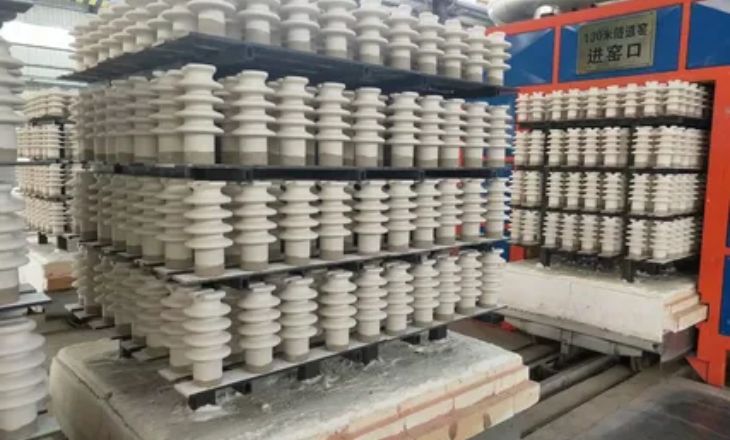
Material:
- Cordierite: The most popular choice for low-to-medium temperature firings (up to 2300°F). It’s lightweight, affordable, and offers good thermal shock resistance.
- Alumina: More heat resistant (up to 3200°F) and stronger, making it ideal for high-temperature firings and heavy pottery pieces.
- Silicon Carbide (SiC): Excellent for extremely high temperatures (over 3000°F) and very strong, but also the most expensive option.
Kiln Shelves Types
There are three main types of kiln shelves used in electric kilns, each with its own strengths and ideal firing applications:
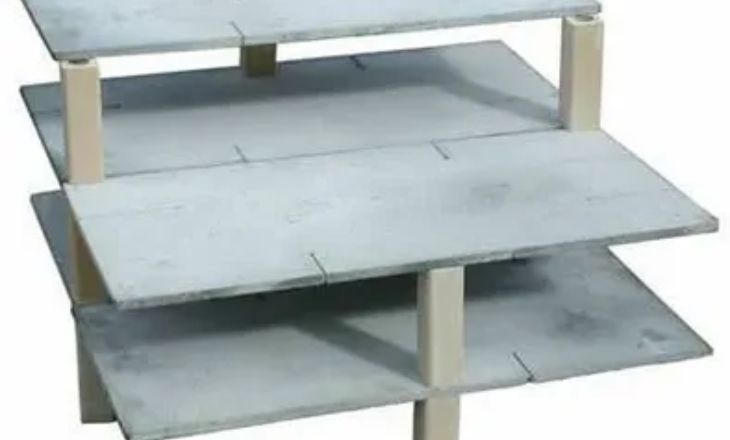
Cordierite:
Pros:
- Most popular and affordable option.
- Lightweight and easy to handle.
- Good thermal shock resistance, meaning they can withstand rapid temperature changes without cracking.
- Suitable for low-to-medium temperature firings (up to 2300°F).
Cons:
- Lower heat tolerance compared to other materials.
- May not be ideal for heavy pottery or very high-temperature firings.
Alumina:
Pros:
- More heat resistant than cordierite, reaching temperatures up to 3200°F.
- Stronger and more durable, making them suitable for heavy pottery pieces.
Cons:
- More expensive than Cordierite.
- Slightly heavier than cordierite shelves.
Silicon Carbide (SiC):
Pros:
- Excellent high-temperature resistance, exceeding 3000°F.
- Very strong and durable, ideal for the most demanding firing applications.
Cons:
- The most expensive option among the three.
- Heaviest shelf material, requiring careful handling.
Selecting The Right Kiln Shelves
Selecting the right kiln shelves is vital for safe and successful electric kiln firings. Here’s a comprehensive guide to help you choose the perfect ones:
Cordierite: The workhorse choice for most potters. It’s:
- Affordable
- Lightweight and easy to handle
- Good for low-to-medium temperature firings (up to 2300°F)
- Offers good thermal shock resistance (important for quick temperature changes)
- Alumina: Ideal for higher demands. It’s:
- More heat resistant (up to 3200°F)
- Stronger and more durable, perfect for heavy pottery
- More expensive than cordierite
- Silicon Carbide (SiC): For the most extreme firings. It’s:
- Excellent for very high temperatures (over 3000°F)
- Exceptionally strong for heavy or large pieces
- Most expensive option, quite heavy
Kiln Shelves Storage
Kiln shelves are flat, often rectangular panels made from heat-resistant materials that are used inside kilns to support items being fired. They come in various sizes to fit different kiln capacities.
- Store them in a dry, enclosed area: Moisture exposure can damage kiln shelves, so avoid storing them anywhere with rain, snow, or condensation.
- Don’t expose them to prolonged moisture: This includes water, but also things like wet environments or humid basements. If your shelves get wet, they need to be completely dried before using them again at high temperatures.
Kiln shelves should be stored standing up on their edges. Storing them flat makes it more possible for them to break or crack. Keep shelve dry. If they do get wet (e.g., after applying kiln wash), heat them slowly and soak for a few hours at 300° F.
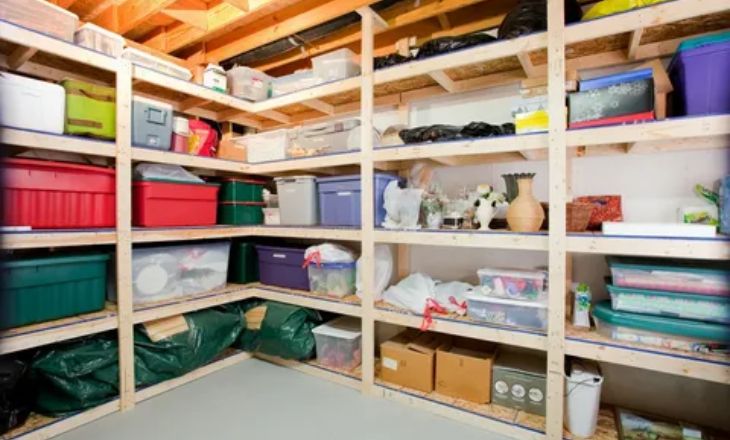
Kiln Wash
Kiln wash, also sometimes called shelf primer, is a protective coating applied to kiln shelves before firing. It acts as a sacrificial layer between your artwork and the shelf itself.
- Material: Made from high-melting-point materials like silica, alumina, or zirconium, kiln wash creates a barrier that won’t melt or react with glazes during high-temperature firing.
- Function: It prevents the glaze from sticking permanently to the kiln shelves. Even with careful glazing techniques, the glaze can run, drip, or splatter unexpectedly. Kiln wash ensures these mishaps won’t fuse your artwork to the shelf.
- Benefits: By using kiln wash, you can:
- Save your kiln shelves from glaze contamination, extending their lifespan.
Protect your artwork from damage if the glaze sticks during firing.
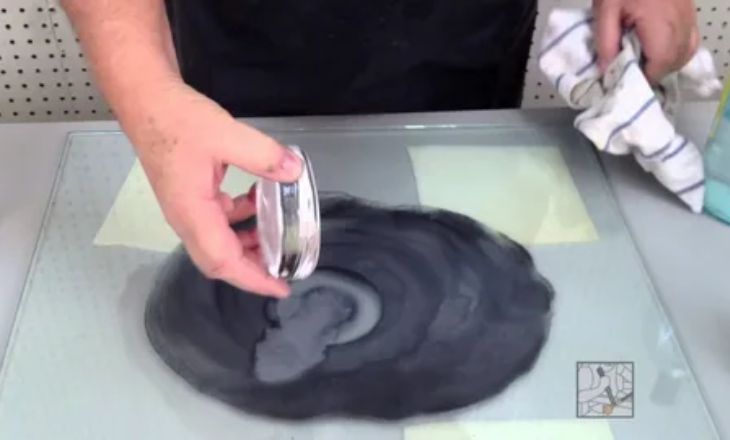
Glaze firing comes in contact with the kiln shelf when something unexpected occurs (e.g., running glaze, tipped over a pot) during the glaze firing even if you wiped the glaze off the bottom or used stilts. If kiln wash was not used in the above possible scenarios, your pot will stick to the shelf and break trying to remove it. You will have to grind the glaze off the shelf’s surface, remaining glaze soaked into the shelves will continue to erode the kiln shelf.
Applying Kiln Wash
Here’s a rundown on applying kiln wash:
- Clean shelves: Before applying kiln wash, make sure your kiln shelves are clean and free of any debris, glaze particles, or old, flaking kiln wash. You can use a damp sponge or stiff brush to clean them.
- Mix the kiln wash: You can buy kiln wash pre-mixed or in powder form that you mix with water. If mixing yourself, follow the manufacturer’s instructions on the ratio of water to powder. Generally, you want a consistency like skim milk – not too thick or runny.
Pottery glaze is a glassy coating applied to ceramic ware after it has been bisque-fired (once fired at a low temperature).
Grinding Off Kiln Wash Before Rotating Sides
Grinding off kiln wash before rotating your kiln shelves is necessary to prevent ruining your pottery during firing. Here’s why:
- Flaking hazard: Kiln wash, especially after multiple firings, can become chipped or cracked. If you simply flip the shelf and reuse it without removing the old wash, these flakes can fall onto your pottery during firing.
- Contamination: These flakes can melt in the high temperatures and contaminate your glaze, ruining the intended finish. This could cause anything from unwanted texture or color changes to complete glaze failure.
- Uneven shelf surface: Over time, with repeated applications of kiln wash, the shelf surface can become uneven. This unevenness can cause your pottery to sit unevenly during firing, which can lead to warping or even cracking.
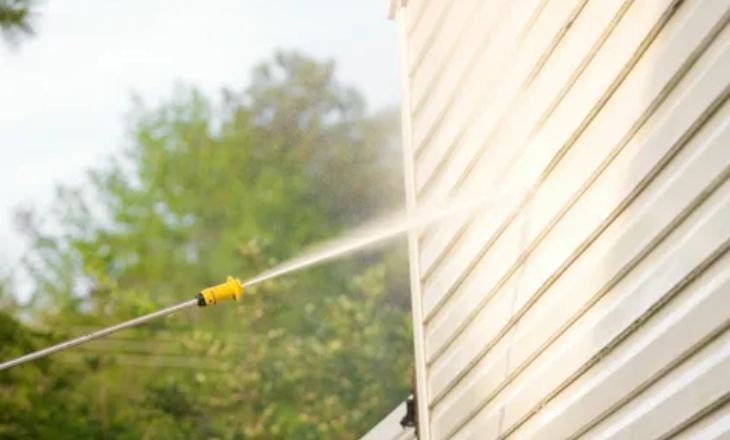
How To Maintain Kiln Shelves?
- Storage matters: Store shelves in a dry, enclosed space to prevent moisture damage. Moisture exposure can cause cracks.
- Regular inspection: During cleaning or between firings, keep an eye out for any signs of wear and tear like cracks, chips, or warping. Damaged shelves can be unsafe and affect firing results.
- Flipping shelves (optional): Some potters flip their shelves after multiple uses. Here’s what to consider:
- Scrape and clean: Before flipping, meticulously scrape off all old kiln wash using a metal scraper or stiff brush. You want to remove any loose particles entirely to prevent them from falling onto your pottery during the next firing.
Optional grinding: For an extra smooth surface, especially if the shelf is uneven from multiple wash applications, you can lightly grind it with a silicon carbide stone.
Re-apply kiln wash: Once the shelf is clean and smooth, apply fresh kiln wash following the usual application process.
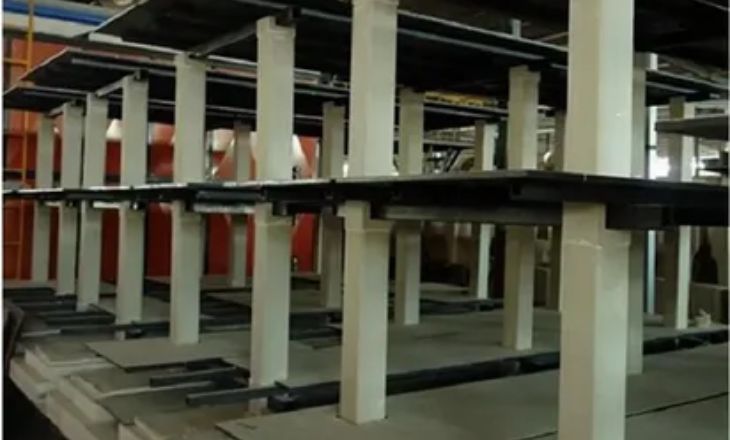
Conclusion
Cordierite kiln shelves for their high-temperature resistance, low thermal expansion, and affordability. Consider shelf size to fit your kiln and choose the right thickness for the weight you’ll be firing. Apply kiln wash to protect shelves from glaze adhesion and extend their lifespan. Regularly inspect shelves for cracks, chips, or warping. Scrape off old wash before reapplying or flipping the shelf.
Store shelves in a dry, enclosed space to prevent moisture damage. Clean shelves with a damp sponge or stiff brush to remove debris before applying wash or reusing.
FAQs
What is kiln shelf wash?
Kiln wash is a barrier to prevent unexpected glaze runs or drips from ruining your pottery kiln shelves, and your work.
How to clean your kiln?
you would use a shop VAC with a separately purchased HEPA filter.
